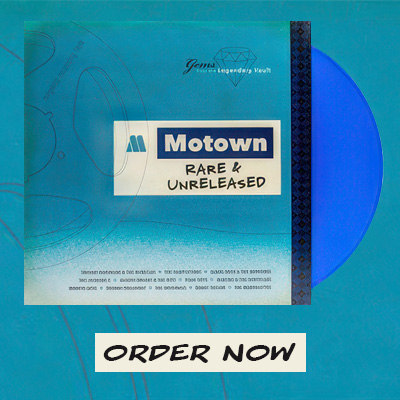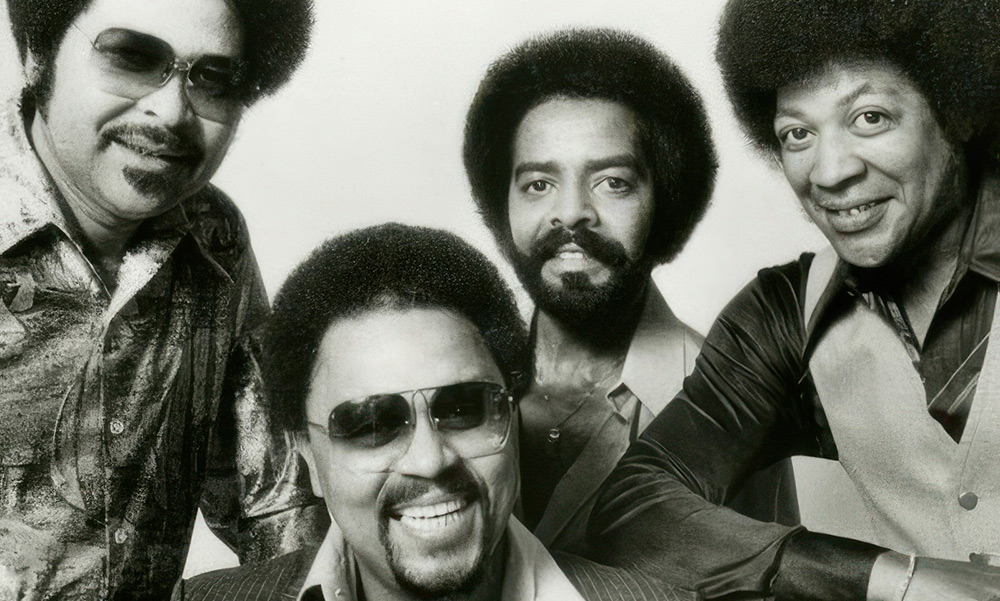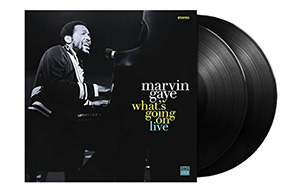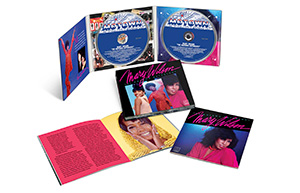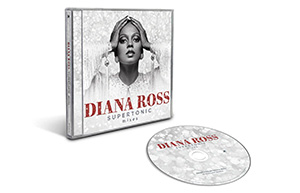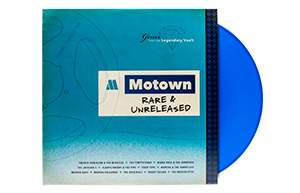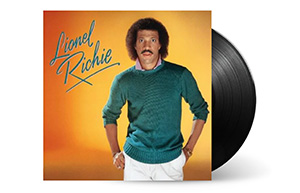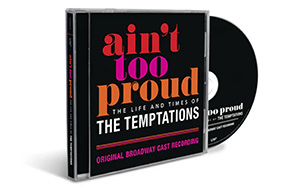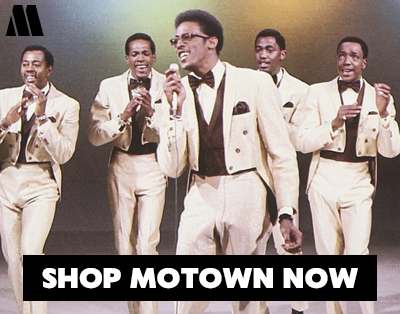The Originals
One of the most versatile vocal groups of Motown’s classic period, The Originals obvious talents initially found a place as Hitsville’s go-to male background singers until they teamed with Marvin Gaye, who wrote a pair of Motown standards for them while they simultaneously helped him hone is production techniques and his sound – playing an essential role in the creation of Marvin’s Motown masterpiece — before enjoying a long recording career of their own.
FAST FACTS:
- First Hit: “Baby, I’m For Real.”
- Biggest Hits: “Baby, I’m For Real” and “The Bells”
- Biggest Album: Green Grow The Lilacs (re-titled Baby, I’m For Real)
- Career Highlight: The quartet records six sides that Marvin Gaye writes and produces, giving the Originals their commercial breakthrough, while simultaneously inspiring Gaye’s own direction toward the distinctive sound of What’s Goin’ On, his landmark album.
Ace Motown songwriter/producer Lamont Dozier plays matchmaker in 1965 putting the Originals together when he unites veteran Detroit singers C.P. Spencer (tenor) and Walter Gaines (baritone) – who had been members of the Five Stars in 1958 when they recorded “Ooh Shucks,” the first song ever produced by Berry Gordy – with Freddie Gorman (an early Motown singer and songwriter – “Please Mr. Postman,” was among his credits – who had left to join Golden World Records and returned when Gordy purchased that outfit) and second tenor Hank Dixon. A fifth member, Ty Hunter, is also recruited but cannot join the group as he is contractually obligated to Chess Records.
The quartet begins recording and among their early efforts is the Holland-Dozier-Holland tune “Suspicion,” with Spencer on lead, which is not released when it is completed in 1966. It is later discovered on a discarded test pressing and becomes a huge dance hall favorite in England’s Northern Soul scene. It remains officially unreleased until 1999.
The Originals first single release comes in 1966, re-working the folk standard “Goodnight Irene” with another longtime Detroit singer, former Falcon and Contour Joe Stubbs on lead vocals. He’s is only briefly in the group. The flip side “Need Your Lovin’ (Want You Back)” covers a Marvin Gaye song. Gaye’s friendship with members of the Originals dates back to the late ‘50s.
With the talent to sing various styles, The Originals’ become the male version of the Andantes, Motown’s ubiquitous female backup singers, lending their harmonies to hits like Jimmy Ruffin’s “What Becomes Of The Brokenhearted,” Stevie Wonder’s “For Once In My Life” and David Ruffin’s “My Whole World Ended,“ Edwin Starr’s “25 Miles,” Jr. Walker & The All-Stars “What Does It Take” and Gaye’s “Chained.”
They also record Gaye’s “You’re The One” in 1968, which appears as the flip side for the next two Originals singles in ’69 – “We’ve Got A Way Out Love,” a Holland-Dozier-Holland production that is strangely released in an unfinished state (lacking strings and horns) after HDH depart Motown, and “Green Grow The Lilacs,” a Fifth Dimension-style song. Both A-sides fail, but recording that B-side starts a fruitful relationship with Marvin, in part because the Originals’ rich harmonies remind him of his own roots in the doo-wop group The Moonglows.
Marvin and wife Anna write a song “The Bells” with The Originals in mind and he calls producer Richard Morris to help him get it on record. Somehow, the song ends up being recorded by Bobby Taylor who, with his group The Vancouvers, has just had the hit “Does Your Mama Know About Me?” and is searching for a follow-up. Taylor records it but Berry Gordy, unhappy with the lyrics, rejects it for release. Marvin rewrites it as “The Bells I Hear,” but Gordy rejects it again. Gaye simplifies the lyrics once more as “Baby, I’m For Real” and turns it back to The Originals. Each member of the quartet sings lead at various times on the track over lush vocal harmonies – which include Marvin — and Paul Riser’s arrangement. Gaye taps sax player Eli Fontaine to sweeten the track with distinctive solos. This time, Berry approves its release and the song lands on the Originals’ debut LP Green Grow The Lilacs in July 1969. It immediately grabs the attention of DJs and retailers and becomes a single in September, rocketing to the top of the R&B charts and Number 14 on the pop chart. The LP is subsequently re-named for the hit and new covers are printed.
For the follow-up, “The Bells,” Gaye recycles lyrical themes from Bobby Taylor’s versions and replicates the rhythmic, melodic and harmonic elements that made “Baby, I’m For Real” a hit, diving even deeper into the doo-wop arsenal with Gorman’s spoken-word interlude over Eli Fontaine’s sax solo. But, like its predecessor, the record is really doo-wop 2.0, a modern, sophisticated update on the classic street-corner sound. The results are strikingly similar: Released in January 1970, “The Bells” zooms to Number 4 on the R&B chart and Number 12 on the Pop chart.
Their second LP, Portrait Of The Originals, comes out in May 1970 and, among its better tracks is “I Like Your Style”, produced by Clay McMurray and “Don’t Stop Now,” produced by Smokey Robinson which becomes a favorite in Great Britain despite never being released as a single.
Marvin produces their third consecutive single, “We Can Make It Baby,” which is released in July 1970, which peaks at Number 20 on the R&B chart and Number 74 on the Pop chart. Then DJs start playing the flip side “I Like Your Style” and it also reaches Number 20 on the R&B chart.
Later in 1970, Gaye produces “Just To Keep You Satisfied” with The Originals but it remains unreleased until 1999. Marvin changes the lyrics and records it himself on his 1973 LP, Let’s Get It On. And when Marvin first hears “What’s Going On” from co-writer Obie Benson of the Four Tops, he seriously considers it for The Originals, before ultimately deciding to add lyrics and cut it himself. The lasting legacy of his work with The Originals is best expressed by Motown historian Adam White, who writes, “The productions foreshadow 1971’s What’s Goin On, in style and texture, including the way arranger David Van dePitte deploys a sax-tinged underbed.” The sax player on What’s Goin’ On? Eli Fontaine.
As 1970 winds down, the group’s single “God Bless Whoever Sent You,” produced by McMurray, hits Number 14 on the R&B chart and 53 on the Pop chart as Motown releases their third LP, Naturally Together.
Spencer leaves the group in ’72 and Ty Hunter takes his spot, finally becoming an Original. But chart action is nearly non-existent despite strong material like the single “I’m Someone Who Cares” and album tracks “Lie No. 2” and “Come Rain Or Shine,” from their LP that year, Definitions.
More quality Originals releases fail to chart in the next few years, including the Stevie Wonder-produced “Game Called Love,” the title song of their 1974 LP.
Lamont Dozier takes a crack at getting them back high on the charts in ’75 with the polished-sounding LP California Sunset, which saw the group transferred to the Motown label, but its only chart entry, “Good Lovin Is Just A Dime Away,” stalls about halfway up the R&B ladder.
Returning to the Soul label as disco takes off, The Originals jump into the fray in 1976. Their 1976 LP Communiqué, produced by Frank Wilson and Michael S. Sutton, contains “Down To Love Town,” which a 12-inch remix release – Motown’s first — and jumps to Number One on the dance charts. In early ’77, the tune becomes the title track of a new LP with even more disco material and that album rises to Number 6 on the specialist club chart.
The group completes their Motown contract on that high note as things change. They sign with Fantasy Records for two LPs, and then cut a final album on Phase II. In 1980, Motown releases its first Originals compilation LP as part of the Superstar series and three more compilations follow. The 1999 CD release, The Best Of The Originals, contains previously unreleased tracks with a focus on the quartet’s work with Marvin Gaye.




